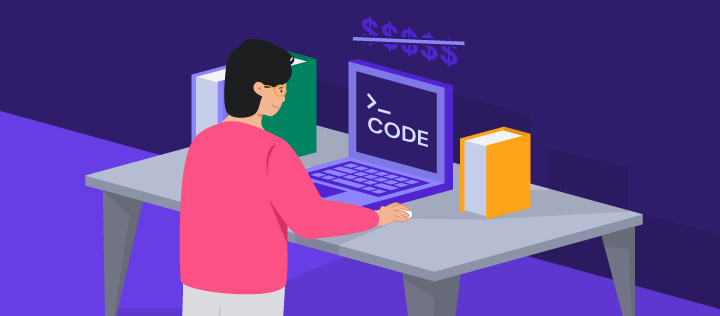

If programming language paradigms are totally new to you, don’t worry about knowing everything about them.
#FREE LANGUAGE PROGRAMS FOR COMPUTER CODE#
Similarly, the more cryptic languages are called low-level programming languages, since they are closer to the binary code a computer understands. The “easier” programming languages are called high-level programming languages, since they don’t resemble the low level binary code at all. Some programming languages read a lot like English, making them easy to learn for beginners.īut others have a much more cryptic feel to them, meaning they’re more difficult to understand and master if you’ve never learned coding before.

Why are some programming languages easier than others?ĭepending on which programming language you learn, the code you write will look very different from pretty much every other language.

Depending on these rules, some programming languages are generally viewed as “easier” for beginners to learn, while others might feel more cryptic for a total newbie. The basic rules for writing code in a specific programming language is called the syntax. Thus, the code you write looks a bit different in each programming language, even if it’s supposed to do the same thing. They all have a unique set of rules that determine the structure and features you can use. When you think about learning a new language, you would need to learn new vocabulary and understand some grammar rules, right?Īnd that’s how programming languages work, too. Thus, it saves you heaps of time when you can work with commands that resemble a spoken language like English. For more details, check out my detailed article about how binary code works.įor now, just know that a programming language helps you write instructions to a computer without having to work on the lowest, binary level of code. You don’t have to understand all of this just now. If this sounds a tad too technical or confusing, don’t worry. They help us work with code that is easier to write, read, and understand than simple binary code with just 1’s and 0’s. Here’s where programming languages come to our aid. Also, the entire process would be extremely prone to errors. If you wanted to read and write your programs using only 1’s and 0’s, it would be awfully time-consuming. Hence, a single computer program can consist of millions of on/off signals. And no matter how simple or complex a program is, it only consists of these two signals. When you put enough of these signals together, you have a computer program. On a technical level, these signals translate into 1’s and 0’s inside your computer, called binary code. To be precise, there are only two types of signals you can give a computer: either “on” or “off”. Therefore, in order to make a computer do what we want, we need a way to translate our instructions to a computer into electronic signals. Now that you know we need programming languages to deliver our instructions to a computer without any ambiguity, there’s one more thing you should know…Ĭomputers only understand electronic signals. The steps of a process have to be told more precisely and without any ambiguity to our computer.Īnd that, my friend, is what we need programming languages for. So, we need a better, more efficient solutions for telling a computer exactly what it should do. However, even if you put plenty of effort into it, you would still end up with something ambiguous and difficult for a computer to understand. Surely, we could keep adding additional points to our instructions to make them more detailed and specific. Further steps assume that there is a stove in the kitchen and that it is working in the first place.You would know how much salt and pepper is enough to make the dish taste good.A computer would not know what size the bowl should be.
#FREE LANGUAGE PROGRAMS FOR COMPUTER HOW TO#


 0 kommentar(er)
0 kommentar(er)
